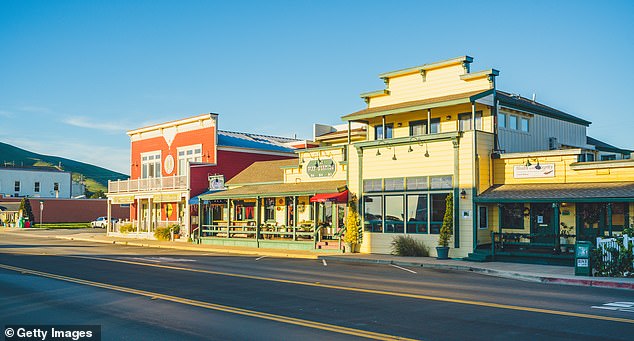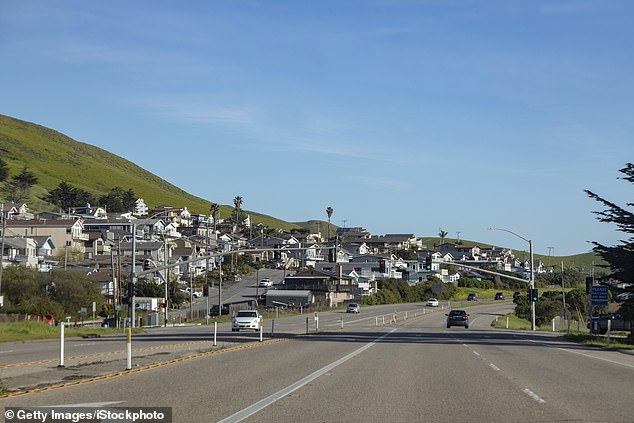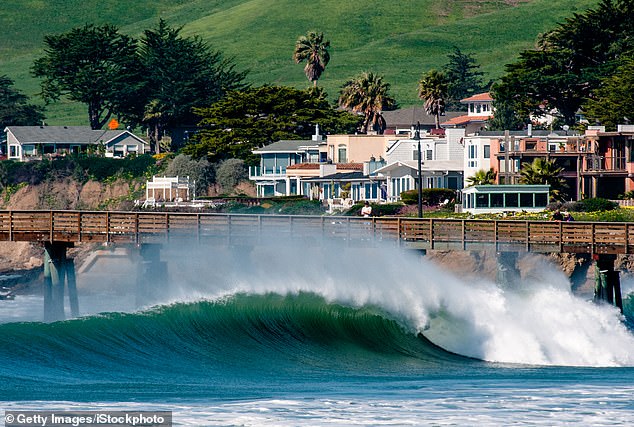Charming California beach town where ‘ruthless money grubbers’ are turning vibrant neighborhoods into ‘lonely, empty ghost streets’
A once-thriving coastal community in California has turned into a ghost town as investors buy up homes and then leave them vacant.
Located in San Luis Obispo County, between Highway 1 and the Pacific Ocean, Cayucos’ slogan is “the last of California’s beach towns.”
The charming enclave has avoided the major development that many other Golden State resorts have faced thanks to strong land conservation efforts.
But now rising house prices and the increasing number of short-term rentals have driven out locals and the town has become almost deserted.
“Cayucos, once a vibrant conglomeration of middle-class neighborhoods, has become a lonely, empty place,” resident Dell Franklin recently wrote in an op-ed.
Cayucos, California is a once-thriving beach town that has become vacant as investors buy up homes and leave them vacant

Rising housing prices and rising short-term rents have driven out locals and left the city virtually deserted
‘[It is] a prey for our richest investors with so much extra money that they target places like Cayucos and buy up land or houses and build behemoths that sit vacant and turn almost every street in Cayucos into a ghost street.”
Cayucos is home to miles of white sand beaches, an iconic fishing pier and beautiful historic buildings.
Like the rest of the state, home prices in Cayucos have increased in recent years, with the median home value reaching $1.3 million, according to Zillow.
The low supply of new homes being built in the city has also contributed to skyrocketing prices.
‘I need desperate sellers. In normal areas, some sellers need to sell. But no one here ever wants to leave,” real estate agent Dale Kaiser told the newspaper Los Angeles Times.
The Cayucos Land Conservancy (CLC) was formed in the 1990s to prevent a project from being built on the Estero Bluffs, which included a 250-room hotel and 65 homes, and the site eventually became a state.
“We were fortunate that we were behind the times,” said Greg Bettencourt, a member of the CLC board. “We saw the development that was happening along the coast in Ventura, Oxnard, Santa Cruz, Monterey. We saw our future and decided we didn’t like it.’
‘The bad news is that there is less land to develop, which means fewer houses. We recognize that limited resources mean higher prices, but development around Cayucos will not lead to lower prices, it will just create a different community.”
Now, no new houses are being built in the town of just over 2,000 residents, but people from out of town who can afford higher prices are buying them and converting them into rental properties.
‘People are struggling to find a place to live, and meanwhile the houses are empty. It rubs salt in the wound,” Kaiser said.
Cayucos has 200 Airbnbs and a total of 350 rental licenses, which is comparable to nearby coastal towns with double or triple the population, according to the LA Times.

The city has avoided development because of the Cayucos Land Conservancy, but that has led to a lack of new homes for residents.

Home prices in Cayucos have increased in recent years, with the current median home value at $1.3 million
When it was founded in 1867, the town was a hub of butter, cheese and milk production where coastal steamboats could dock and transport the dairy products around the state, according to the Cayucos Chamber of Commerce.
Now, because of its proximity to major cities, wealthy elites are flocking to the city to buy up beach houses that either sit empty when not there or are converted into short-term rentals.
‘I can’t blame them for coming. This is a magical place and we are on the 50 meter line between Silicon Valley and Hollywood. But it’s hard for locals to compete with the money being made in San Francisco or Los Angeles.”
Local entrepreneurs now depend on tourists for their income and some of them cannot even afford to live where they work.
‘Ninety percent of our customers are tourists. We survive because of tourism,” said Donna Codi, a part-time employee at the antique shop Remember When.
